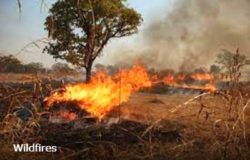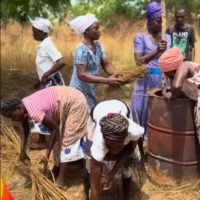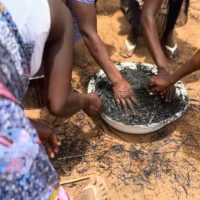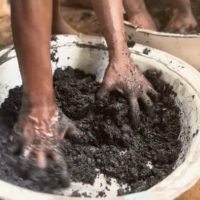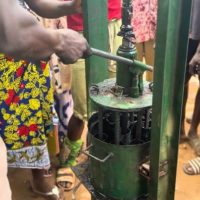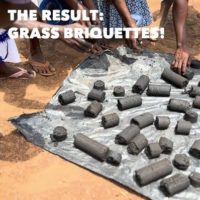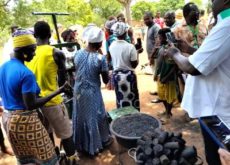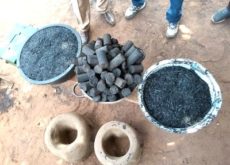Agroécologie Afrique de l’Ouest
– Ghana –
Grass charcoal to fight bushfires
This article is essentially extracted from an FAO article for which you will find the link at the bottom of the page as well as its French translation.
In Ghana, small producers are revolutionizing the production of charcoal. By using savanna grasses to make charcoal briquettes producers promote renewable energy and green jobs. It burns slower, making it ideal for cooking. The Ghana Federation of Forest and Farm Producers and the Millar Institute for Transdisciplinary and Development Studies with Forest and Farm Facility support trained five forest and farm producer organizations on the production of grass charcoal.
During the dry season, the abundance of savannah grass often fuels the wildfires characteristic of those months. Fires can decimate crops and thus threaten food security.
Annually, many farmers in Northern Ghana, particularly Upper East, Upper West, North East, Northern and Savannah Regions lose their farm produce to bushfires and the phenomenon has constantly threatened the toils and livelihoods of farmers and their families in the area
From grass to charcoal
Now, savannah grass can be used to fuel stoves thanks to a new charcoal production method developed and piloted as part of an initiative by the Millar Institute for Transdisciplinary and Development Studies (MITDS), with financial and technical support from the Forest and Farm Facility (FFF) of the FAO (Food and Agriculture Organization of the United Nations)
The Grass Briquettes Technology, which had been at research level for the past 10 years, has now been practicalised with charcoal production.
Whereas traditional charcoal is produced with biomass harvested from trees, the grass briquettes use harvested grass and a binding agent to create small bricks of charcoal. The process is less labour-intensive and the bricks easier to produce.
A ‘binder’ ingredient is vital to ensure the charred organic matter sticks together. It’s intéressant to know that rather than using income on buying a product, some people have developed a cassava dough that works just as well.
Training local communities
MITDS has piloted the production and use of grass briquettes across five forest and farm producer organizations. FFF additionally provided support for training these producer organizations and facilitated market access and development.
Local women represented 234 of the 448 people trained. They have learnt how to harvest the grass sustainably, produce the grass briquettes and market their surplus for commercial sale.
Over 95 percent of those involved reported that they felt the new grass briquettes were a good business opportunity
The 2 FAO articles
one in English and the same in French
– Innovative grass charcoal fuels opportunity in Ghana / PDF-2023
– Le charbon d’herbes, une innovation prometteuse au Ghana / PDF-2023
See also :
– Fighting bushfires and climate change: Millar Open University leads way for grass economy / by GNA , PDF 2023
– Taking the heat out of wildfires by creating sustainable cooking fuel/ by TreeAid 2023
CONTACTS and LINKS
Millar Institute for Transdisciplinary and Development Studies (MITDS)
David Millar, directeur
– Adresse : Box 607, Bolgatanga
– Mail : info@mou.edu.gh
– Site : https://mou.edu.gh/
Website : FAO Forest and Farm Facility
See also other agroecological actors in West Africa
In Ghana and also in Niger, Ivory Coast, Togo, Mali, Burkina Faso, Benin and Senegal
The Google Maps
On the map, choose an icon (then “more info” on mobile). You will find notices with contacts (when we found them), links, photos and sometimes videos.
Mil’Ecole – Mas 2024
